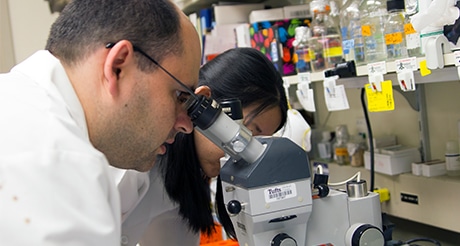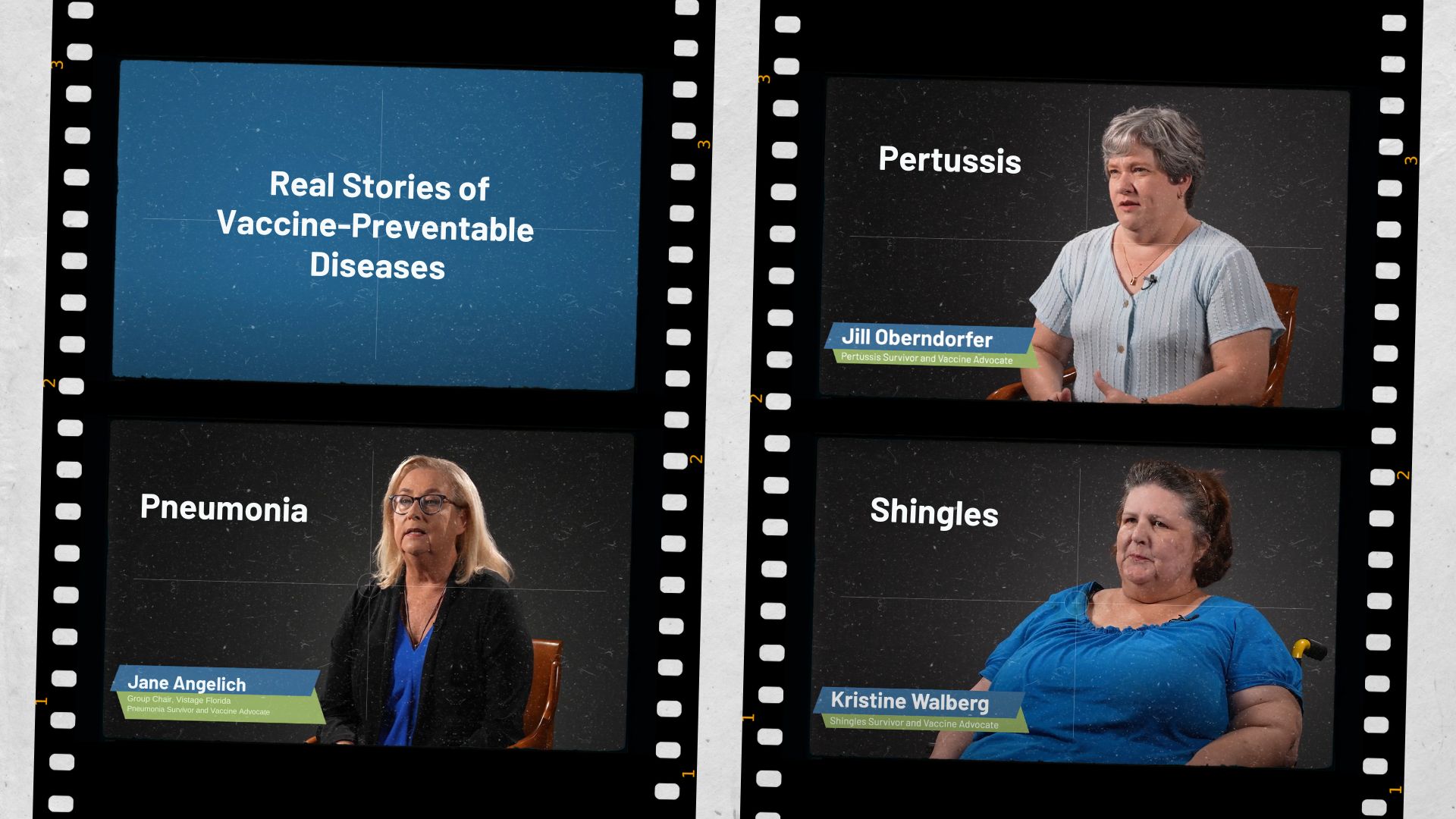

For this edition of the Healthspan Expert Q & A, we speak with expert Sheldon Rowan, Ph.D., from the Tufts University Human Nutrition Research Center on Aging.
Q: Could you describe your background?
SR: I completed my Ph.D. studies at Harvard Medical School with Dr. Connie Cepko, studying development of the retina in the back of the eye. I created genetic tools that are now widely used to test the importance of different genes in the retina. I then performed my postdoctoral work with Dr. Richard Maas at Brigham and Women’s Hospital, where I studied how the ocular lens forms and grows to become a transparent tissue. I joined the Tufts University Human Nutrition Research Center on Aging (HNRCA) in 2012 as a junior scientist and was promoted to assistant professor in 2014.
Q: What is the current focus of your work?
SR: Our group is interested in understanding the role of nutrition and diet in age-related diseases of the eye, primarily age-related macular degeneration (AMD) and cataracts. We explore this epidemiologically in large human cohorts and test associations using animal models that we develop and biochemically in cell-based assays. My work centers on the role of the dietary glycemic index in AMD. Our epidemiology indicates that individuals consuming high glycemic index diets (i.e. too much refined carbohydrates or added sugars) are at increased risk for early and late AMD. I generated a mouse model where we feed normal mice calorically identical high or low glycemic index diets and allow to them age until they become elderly. The mice fed high glycemic index diets develop many hallmarks of AMD. By understanding the different metabolic changes induced by these diets, we can understand pathways that lead to AMD and potentially identify new disease biomarkers. One of our exciting findings was that through switching diets midway through the study from high to low glycemic index we were able to completely prevent development of AMD.
Q: What’s your take on research surrounding age-related macular degeneration?
SR: As a research community, we’ve made incredible strides in treating wet AMD and in using imaging to understand the disease process in people. Stem cell therapy for AMD remains in its infancy, but this is the first disease that we are going to be able to treat one day using personalized induced pluripotent stem cell approaches. That’s very exciting for the future. However, I think as a whole that the development of new treatments for dry AMD lags behind that of wet AMD, so I’m not quite as hopeful about dry AMD at this point. Animal models are critical, and some of the different ones that have been tried, especially rodent models, have generated leads that haven’t shown promise in early clinical trials. Where we have made important basic research findings in AMD, we haven’t always been able to identify clear drug targets or therapeutics. An area that has really held back the field has been in biomarker discovery. Even though the imaging has been terrific, we don’t have clear biomarkers like low-density lipoprotein, LDL, or CRP, C-reactive protein, to track AMD progression, when treatments are most likely to be effective. It may be that the biomarkers are not going to come from traditional places like hormones or cytokines, but will be novel metabolites, modified lipids, or even microbiota.
Q: How is AMD related to aging, metabolism, and the gut microbiome in particular?
SR: As you might expect from the name, the strongest known risk factor for AMD is increasing age, especially for individuals older than 60. Aging affects many of the other known risks for AMD by changing our metabolism and increasing inflammation. High body-mass index (BMI) is a known risk factor for AMD, and of course is a strong factor in development of metabolic syndrome, which includes high cholesterol levels and hyperglycemia. In turn, components of metabolic syndrome, like high triglyceride levels and high fasting blood glucose levels, also increase risk of AMD.
Metabolic syndrome is also related to changes in the bacteria and other microorganisms that live within our guts, collectively referred to as the gut microbiome. We know that microbiome composition changes with high BMI, and we are also uncovering the back-and-forth communication whereby different kinds of bacteria in turn change our metabolism and propensity to metabolic disease. Given the similar connections between gut microbiota and metabolic disease, and between metabolic disease and AMD, it is reasonable to wonder whether there might be a connection between the gut microbiome and AMD. We now know that the answer to this question is yes. Studies in the last six months, including my own work, show that in animal models of dry or wet AMD, changes in the gut microbiome alter the risk and extent of AMD. Associations between different kinds of gut microbiota have also been shown in wet AMD in a human study. One of the exciting findings from these studies is that different kinds of microbiota are associated with protection or worsening of AMD. That means that we can look toward possible interventions where we try to increase the populations of eye-healthy microbiota or decrease the populations of pathogenic microbiota. One of the best ways that we can change our gut microbiota is through changing our diets.
Q: What is the connection between nutrition and AMD?
SR: Nutrition and AMD have been connected via hundreds of studies over the last three decades. In fact, it was this strong body of evidence that encouraged the National Eye Institute to launch its landmark AREDS and AREDS2 studies. The huge randomized clinical trials identified key micronutrients such as vitamin C, vitamin E, zinc, copper, lutein, and zeaxanthin as the only treatment we have to stop progression of AMD. We know a great deal from epidemiological studies about other nutrients that protect against AMD when consumed within a diet (not as supplements). These studies point to fish oils like DHA and EPA and dark green leafy vegetables as being highly protective against AMD. However, the best protective effects are usually associated with dietary patterns, where the combination of several different kinds of healthy foods work together to prevent AMD. The most famous of these dietary patterns is the Mediterranean diet, which emphasizes fruits and vegetables, nuts, olive oil, fish and seafood, and red wine. Individuals that adhere more strongly to a Mediterranean dietary pattern have lower rates of AMD. The opposite finding is also true. Individuals that adhere the most to the Western dietary pattern, characterized by added sugars, red meat, processed grains, and low consumption of fruits and vegetables, are at very considerable risk for AMD. Some of the findings of these dietary patterns can also be explained by macronutrient quality. For example, the Mediterranean diet is generally lower glycemic index, while the Western diet is high glycemic index.
Q: What role in general does healthy aging play in overall eye health?
SR: Healthy aging is the key to having the lowest overall risk of developing eye disease. Almost all of the major blinding diseases, AMD, diabetic retinopathy, glaucoma, and cataracts have aging as the number one risk factor. Depending on your genetics, they may all be preventable with the right combination of diet, exercise, and overall lifestyle. This includes not smoking and getting regular physical examinations with your doctor. Losing your eyesight ranks among the highest concerns of aging Americans. Some good news that has come out of my research is that it is never too late to make positive changes to our diets to preserve vision. In fact, as we age, getting proper diet and physical activity becomes even more important. At the HNRCA, our mission is to explore the relationship between nutrition, aging, and health to promote the best nutrition, physical activity, and healthy living choices that encourage vitality. Our eyes are a window to our health, and healthy aging is our best opportunity for lifelong healthy vision.






